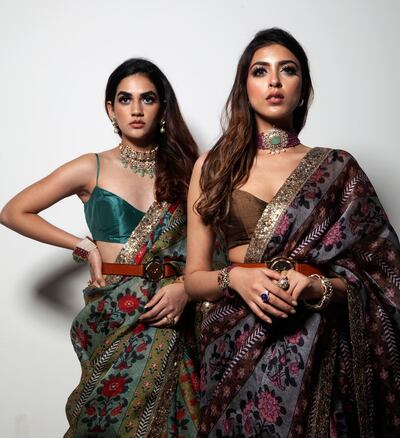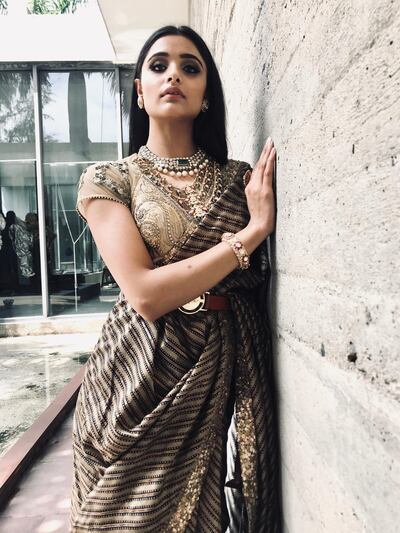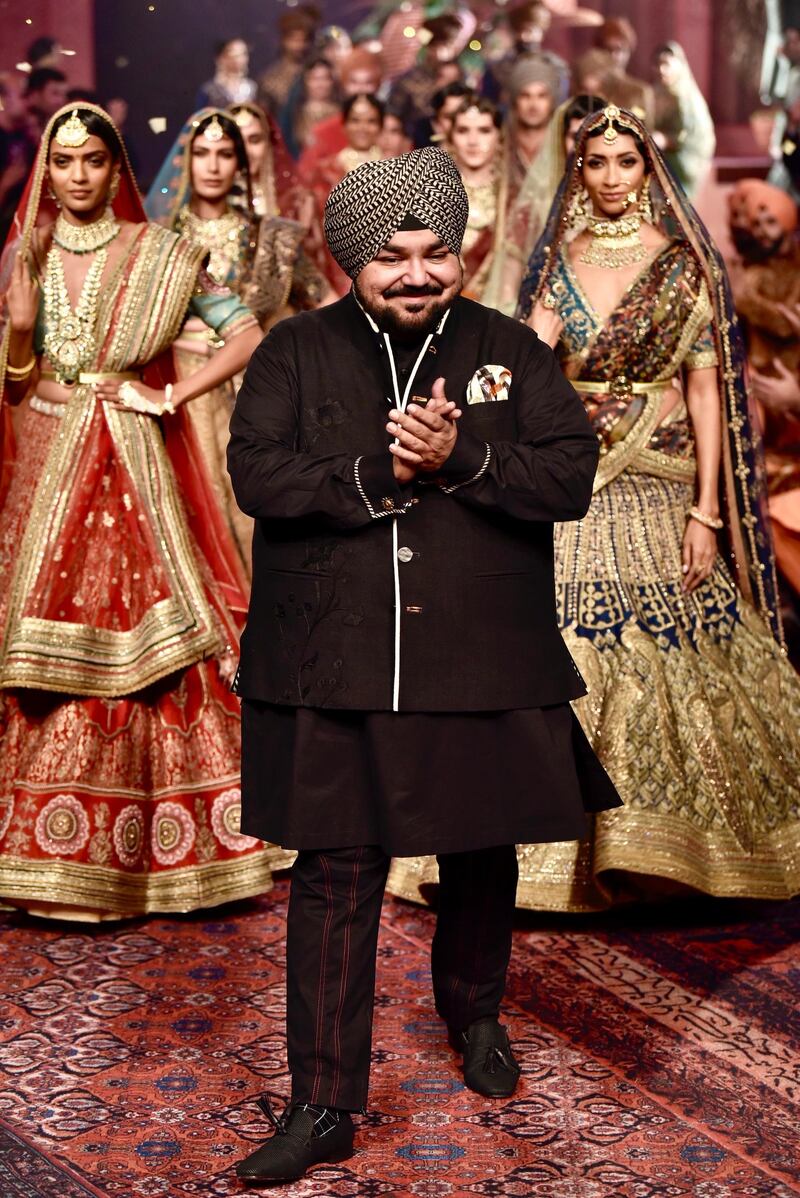While he didn't know it at the time, J J Valaya's two-year hiatus from the world of fashion was, in many ways, a pre-emptive strike. In 2017, after 25 years in the industry, the Delhi designer decided to take a step back to try to shake off a growing sense of ennui.
"I thought that everybody was doing the same thing and they were not doing it well," Valaya, who is widely regarded as one of the founding fathers of Indian fashion, tells The National. "Quality was suffering and it was boring. I remember sitting at a couture week two and a half years back, and looking at the clothes and thinking: 'What happened to the magic of fashion?'"
"I thought it was boring. And I suspected that I was fitting into that mould as well," says the designer, displaying a level of self-awareness that is generally lacking in the upper echelons of the fashion industry.
“There is too much focus on the money,” he says of the industry at large. “Where do we get it; how do we get it; when do we get it? And I think those three things kill the very spirit of creativity.”
He took time off to reassess his priorities – something he believes many of his peers are now also being forced to do as a result of the pandemic. And so he is – as he has been for the best part of three decades – once again ahead of the curve. "A friend of mine made a very good statement once. He said that the world is a rat race, but the rats aren't winning. After my sabbatical, I decided that I wasn't going to run the rat race any more, because it's futile," he says.

"We decided that we wanted to take luxury to the nth level, which is what we are working on currently. I want to do luxury, I want to do it well and I want to continue doing what I believe in, which is sustainability. I have brides from 26 years ago coming to us with their daughters, who want their mother's clothes altered to their size. And you put the clothes on and they look like they were made yesterday.
“So the brand has already been practising sustainability for a long time. Fashion is going to slow down. There is already talk of seasons disappearing and there being only two primary seasons, with time to make good-quality clothes that you can use, enjoy and pass on.”
As part of Valaya's renewed vigour, he launched an e-commerce site on August 27, in an effort to further connect with the brand's sizeable client base outside Delhi and outside India. Although his creations need to be seen, touched and worn so that the craftsmanship and level of detailing can be fully appreciated, Valaya feels confident that the team have been able to create a suitably immersive online experience.
The site tells Valaya’s story as a pioneer of Indian fashion, and showcases his latest collections, including Tabriz, a stunning ode to Persian art and culture from the 16th to 19th centuries that marked the designer’s return to the industry when it was unveiled last year.
The site also embraces the made-to-measure, bespoke experience that is so integral to Indian couture, through initiatives such as Ika, a DIY jacket that is a more accessible "sibling" to Valaya's signature Alika jacket, which was launched in 2010 and has been a firm favourite ever since. Through the website, customers can create their own personalised, reversible Ika jackets, by selecting their preferred fabrics, embroideries, prints and finishes.

This personalised, made-to-order approach is the future of high-end fashion, Valaya says. “I think that’s the only way luxury will survive. At least for Indian luxury, what customers like is that we can do bespoke to the nth degree. And we are not French couture, so you are not paying an astronomical amount for something that is personalised to you.
"The strength that we have in India is we have access to craftsmen who can put something together in a matter of months and we have access to people who are experts in making sure every nip and tuck is done properly to make it fit right. Indian couture has always survived on bespoke and made-to-measure. So for luxury, that is definitely going to be the future, but in India it is also the present, and it has been the past as well."

Next on the cards for the designer is World of J J Valaya, which he describes as "the most beautiful space for fashion and home luxury in India". The flagship in Delhi was due to launch last month, but has been pushed back to early next year. And then, in the next two to three years, Valaya may look at introducing a "bridge to luxury" brand, he says, using Miu Miu, Prada's more accessible offshoot, as an example. "If we are talking about taking the game to the next level, I think most luxury brands will have to look at a bridge to luxury route," he says.
India's fashion scene has evolved beyond recognition since Valaya started out. "When we started, three decades ago, there was no customer," he says. "We started at a time when there was one fashion institute in the country, which used to prepare 20 designers to come out. There were no magazines writing about fashion; there were no newspapers covering it. India had one TV channel, which only understood agriculture; the internet did not exist."
"Cut to now. We have the world in the palm of our hand. We have fashion weeks and I don't know how many fashion institutes. The Fashion Design Council of India was literally conceived by six or seven of us sitting in our offices and today is the most respectable fashion body in the country.
"We've been part of the process. We had no benchmarks to follow; we learnt from our mistakes. So we've gone from an era when people used to buy fabric and go to a tailor, to actually coming into stores, spending time and understanding that it's not about clothes but it's about the ethos of a brand that they connect with."
The J J Valaya ethos remains rooted in creating clothes that are culturally authentic – he coined the term “royal nomad” to describe his aesthetic, which has a regal bearing, but also draws on cultural influences from around the world. As seen in his Chevron collection, he is also partial to Art Deco styling – but even though he drew his inspiration for this collection from old Rajasthani architecture, he manages to make it feel fresh and relevant.

Valaya has been vocal about the perils of young Indian designers hoping to make their name by creating western-style clothing. "As designers, it is very important that we stay connected to our roots. My problem starts here with the design institutes in India. I always say: 'If you are keeping a young person with you for four years and out of that, you spend three and a half years teaching them about western clothes, and then for three or four months, you introduce a module for Indian clothes, how does that make sense. What are you telling that person? What are you preparing them for? Would that happen in Italy? Or France? Where they teach Indian clothes for three years and then western clothes for a few months?
“The world has shrunk. Anyone who wants good western clothes can get them from a good western designer. If you want a gown, go to Italy or go to France, or go to South-East Asia, even. The point is, why don’t we explore what we are brilliant at, and take that to the next level?”







